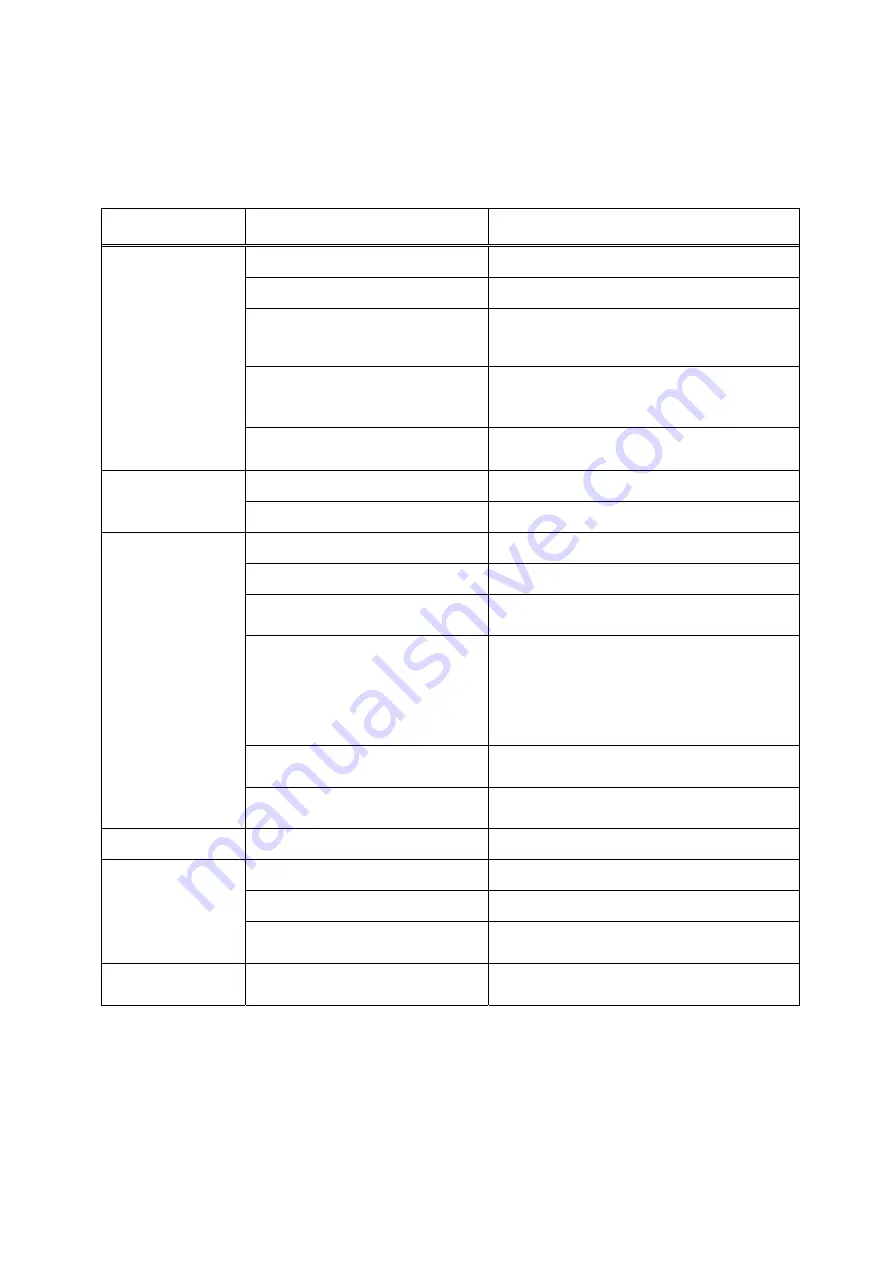
12
Troubleshooting Square Wheel Grinders
Table 2
* WARNING: Some corrections may require a qualified electrician.
Symptom
Possible Cause
Correction *
Machine won’t start. No incoming power.
Verify machine connections.
Cord damaged.
Replace cord.
Building circuit breaker trips or fuse
blows.
Verify that machine is on a circuit of correct size,
preferably a dedicated circuit. If circuit size is
correct, there may be a loose electrical lead.
Motor overloaded.
Vacuum motor fan area to promote proper air
circulation. (Do NOT use compressed air.) Allow
machine to cool, then restart.
Motor or switch failure.
Have tested by qualified electrician or motor
repair shop, replace if needed.
Machine won’t attain
full speed.
Extension cord too light or too long.
Replace with adequate size extension cord.
Low current.
Have voltage checked by qualified electrician.
Poor tracking.
Low voltage.
Check power line for proper voltage.
Incorrect belt tension.
Set tension so belt is just taut.
Worn contact surfaces.
Check contact wheels for wear. Replace worn or
warped wheels.
Misaligned contact surfaces.
Check alignment of drive wheel and contact
wheel - they must be aligned. To adjust drive
wheel, loosen set screws and move drive wheel
in or out on motor shaft as required. To adjust
contact wheel, loosen shaft clamping screw and
move contact wheel in or out as required.
Lack of crown on drive wheel.
Check for 1/16-inch crown. Replace drive wheel if
crown is not present.
Worn bearings.
Check all bearings for overheating or damage.
Replace worn or damaged bearings.
Slack belt.
Insufficient belt tension.
Set tension so belt is just taut.
Contact wheel wear. Excessive belt tension.
Set tension so belt is just taut.
Grinding in one area on belt.
Use entire width of belt whenever possible.
Excessive grinding deposits on belt
and debris in machine.
Clean abrasive belt and grinder interior.
Short belt life.
Excessive grinding pressure.
Allow the belt to do the cutting. Excessive
pressure dulls the belt and removes the grit.






































